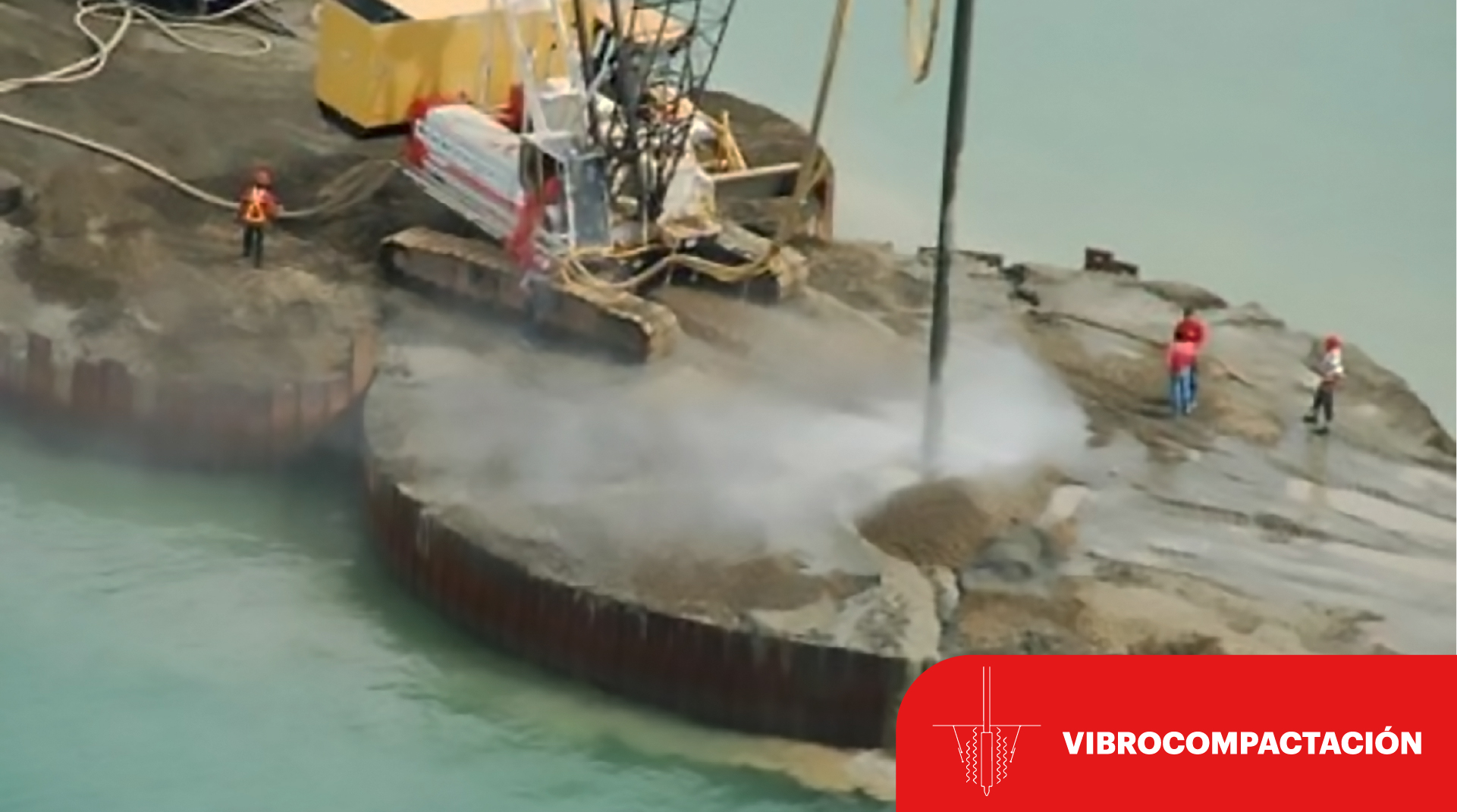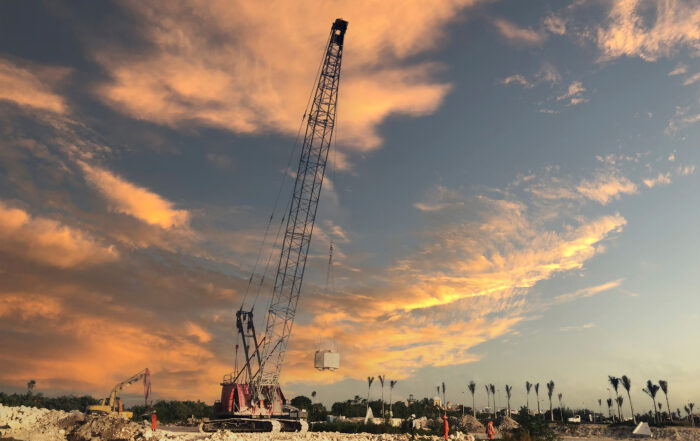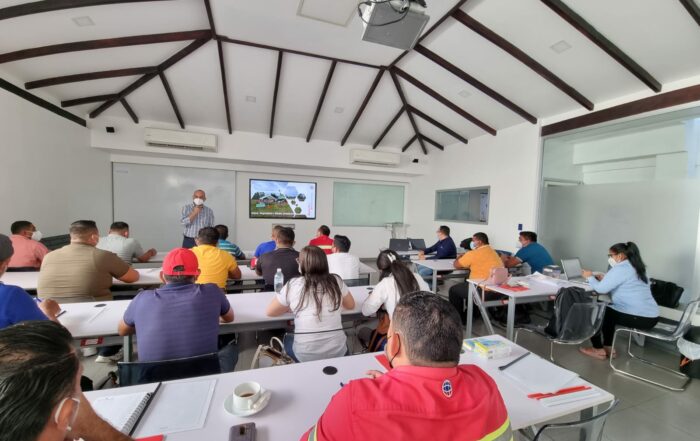Different techniques of soil improvement can prevent the phenomenon of liquefaction from occurring in sandy or silty-sandy soils.
Depending on stratigraphical conditions, depths of treatment, initial and final values required for safety factors against liquefaction, F.S.liq, as well as the construction site conditions, execution programming, and resources allotted to a particular project, one or various of the following techniques may be eligible for application:
DYNAMIC COMPACTION (DC)
A heavy pounder of steel is repeatedly dropped in regular grids over liquefiable sandy soils. The dynamic action of the fall of the pounder produces the compaction of the sands and reduction of voids.

VIBROCOMPACTION (VC)
In points defined by regular grids, a vibrator or vibrating probe is inserted in the soil with the purpose of densyfing the loose sandy soils that it passes through. The vibration allows the rearrangement of the soil particles, reducing their voids and making the ground denser.

VIBRO REPLACEMENT (VR) / STONE COLUMNS (SC)
Gravel of specific granulometry is introduced and compacted into the ground with a vibrating probe, forming columns of this material, arranged in regular grids.
The large scale placement of these compacted gravel columns manages to densify the granular soils that surround the columns and generates points of generous drainage that help to quickly reduce excess pore pressure that occurs during an earthquake

DYNAMIC REPLACEMENT (DR)
Using a heavy steel pounder with a special shape, that is repeatedly dropped in the ground, craters are formed, which are later filled with granular material, which is compacted using the same pounder.
The dynamic action produced by the impact of the pounder with the ground, inserting granular soil in it, and pushing it laterally during compaction produces a reacomodation of the ground particles
that densifies the ground. Aditionally, the granular columns of great diameter (1.8 to 2.2 meters), also represent significant drainage zones that allow a quick dissipation of pore pressures that increase suddenly during earthquakes.

EARTHQUAKE DRAINS
The massive installation of a set of these special prefabricated drains allows for a considerable increase in the global permeability of a ground formed by liquefiable soils, in such a way that it is possible to avoid the increase in pore pressures generated when an earthquake occurs.

COMPACTION GROUTING
A special mixture of mortar is injected under controlled pressures and volumes in a potentially liquefiable strata, in order to form bulbs that will laterally displace the sands or silts found in its path and thus reduce the existing voids.
After these injections are executed at equispaced points and selected depths, the relativecompactness of the soils is increased at the required depths.

SOIL MIXING (SM)
The technique consists of mixing the existing soil with a cementing agent by the means of the mechanic action of augers or special tools. The process executes the destructuring of the natural soil without extracting it, the injection of a cementitious bond at low pressure and the creation of soil-cement mixtures on the ground. The new condition of the mixed soils allows to mitigate and/or reduce the effects of liquefaction.

CONTROLLED MODULUS COLUMNS (CMC)
CMC are rigid inclusions made of mortar or plain concrete used to reinforce soils and reduce its compressibility. These vertical columns are installed into the soil by means of a specially designed hollow displacement auger that allows the placement of the mortar or the concrete by pumping. The displacement auger is pushed into the ground to the required depth, displacing the soils laterally, so the density of the existing surrounding sands can be increased and liquefaction mitigation can be achieved with
properly designed installation grids. Additionally, the presence of the rigid elements into the ground and the soil lateral pressures on the CMC also contribute to the mitigation effect.

COMPACTION GROUTING COLUMNS (CIC)
CIC are mortar columns installed into the ground with the same equipment and following the same methodology of the CMC’s, but they are used when the densification obtained in the sandy soils by means of the use of the lateral displacement auger is not enough to mitigate the liquefaction effects thus an additional densification is needed. For these cases, an extra injection of mortar is done in order to generate bulbs which can further displace the soils where it is needed and as much as it is needed to achieve the required densification, in the same way that is done with the Compaction Grouting technique.







